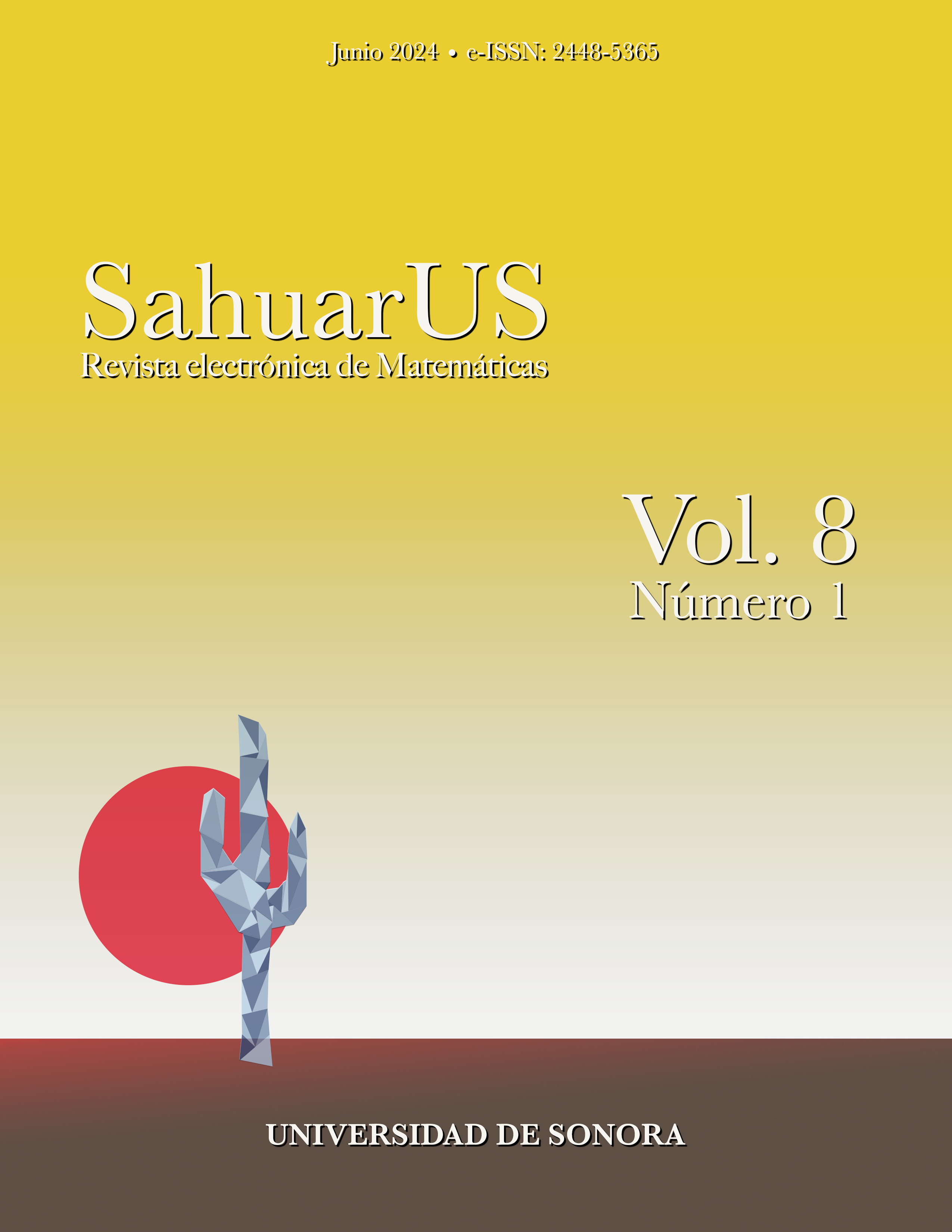Caos: ¿un orden para el desorden?
DOI:
https://doi.org/10.36788/sah.v1i2.38Resumen
En este artículo se describen las características esenciales que determinan un comportamiento caótico en los sistemas dinámicos. Con este fin, se reproduce el análisis de la Ecuación Logística. También, se muestran los conceptos de dimensión fractal y autosimilitud por medio del Conjunto de Mandelbrot. La sensibilidad a condiciones iniciales es ejemplificada por el Sistema de Lorenz. Finalmente, se exponen los ingredientes necesarios de la ruta Ruelle–Takens–Newhouse al caos en el sistema de reacción-difusión Barrio–Varea–Aragón–Maini.Descargas
Citas
Alligood, K., Sauer, T., y Yorke, J. (1996). Chaos: An Introduction to Dynamical Systems. NewYork: Springer–Verlag. DOI: https://doi.org/10.1007/b97589
Aragón, J., Barrio, R., Woolley, T., Baker, R., y Maini, P. (2012). Nonlinear Effects on Turing Patterns: Time Oscillations and Chaos. Phys. Rev. E , 86 (2), 026201. DOI: https://doi.org/10.1103/PhysRevE.86.026201
Gabrys, E., Rybaczuk, M., y Kedzia, A. (2005). Fractal models of circulatory system. Symmetrical and asymmetrical approach comparison. Chaos, Solitons and Fractals, 24 , pp. 707–715. DOI: https://doi.org/10.1016/j.chaos.2004.09.087
Gleick, J. (1987). Chaos: Making a New Science. New York: Viking Penguin Inc.
Ivancevic, V., y Ivancevic, T. (2008). Complex Nonlinearity. New York: Springer–Verlag. DOI: https://doi.org/10.1007/978-3-540-79357-1
Laplace, P. (1902). A Philosophical Essay on Probabilities (traducido del francés, 6◦ ed.; F. Truscott y F. Emory, Eds.). London: John Wiley & sons.
Li, T.-Y., y Yorke, A. (1975). Period Three Implies Chaos. The American Mathematical Monthly, 82 (10), pp. 985–992. DOI: https://doi.org/10.1080/00029890.1975.11994008
Lorenz, E. (1963). Deterministic Nonperiodic Flow. J. Atmos. Sci., 20 , pp. 130–141. DOI: https://doi.org/10.1175/1520-0469(1963)020<0130:DNF>2.0.CO;2
May, R. (1976). Simple Mathematical Models With Very Complicated Dynamics. Nature, 261 , pp. 459–467. DOI: https://doi.org/10.1038/261459a0
Murray, J. (2002). Mathematical Biology II: Spatial Models and Biomedical Applications (3◦ ed.). New York: Springer–Verlag. DOI: https://doi.org/10.1007/b98868
Peitgen, H., Jürgens, S., y Saupe, D. (1992). Chaos and Fractals. New York: Springer–Verlag. DOI: https://doi.org/10.1007/978-1-4757-4740-9
Pickover, C. A. (2009). The Math Book: From Pythogoras to the 57th Dimension, 250 Milestone in the History of Mathematics. New York: Sterling.
Poincaré, H. (1899). Les méthodes nouvelles de la mécanique celeste. Gauthier–Villars et fils. DOI: https://doi.org/10.1007/BF02742713
Robinson, C. (1999). Dynamical Systems; Stability, Symbolic Dynamics and Chaos. US: CRC Press LLC.
Schiff, J. L. (2008). Cellular Automata: A Discrete View of the World. Wiley–Iterscience. DOI: https://doi.org/10.1002/9781118032381
Sharkovsky, A. (1964). Coexistence of cycles of a continuous map of a line into itself. Uk. Math. J., 16 , pp. 61–71.
Smith, R. (2013). Period doubling, information entropy, and estimates for Feigenbaum’s constants. Int. J. Bifurcation Chaos, 23 (11), 1350190. DOI: https://doi.org/10.1142/S0218127413501903
Strogatz, S. H. (2015). Nonlinear Dynamics and Chaos. Whit Applications to Physics, Biology, Chemistry, and Engineering (2nd ed.). New York: Westview Press.
Turing, A. M. (1952). The chemical basis of morphogenesis. Phil. Trans. R. Soc. Lond. B , 237 (641), pp. 37–72. DOI: https://doi.org/10.1098/rstb.1952.0012
Verhulst, F. (1996). Nonlinear Differential Equations and Dynamical Systems. New York: Springer– Verlag. DOI: https://doi.org/10.1007/978-3-642-61453-8
Wiggins, S. (2003). Introduction to Applied Nonlinear Dynamical Systems and Chaos. New York: Springer–Verlag.
Descargas
Publicado
Cómo citar
Número
Sección
Licencia
Los artículos publicados por Sahuarus. Revista Electrónica de Matemáticas se distribuye bajo una Licencia Creative Commons Atribución-NoComercial-SinDerivadas 4.0 Internacional, la cual permite la distribución y el uso del material publicado citando la fuente de la que proviene, prohibe la modificación y el uso con fines comerciales.







